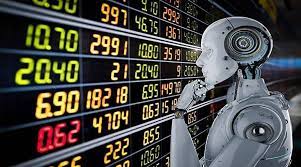In the ever-evolving landscape of financial markets, the advent of technology has revolutionized trading practices, particularly in the realm of forex (foreign exchange) trading. Among the myriad tools available to traders, forex robots stand out as powerful instruments for automating trading processes and forex robot increasing profitability. These sophisticated algorithms execute trades on behalf of traders based on predefined criteria, leveraging speed, precision, and consistency to navigate the complexities of currency markets. In this article, we delve into the world of forex robots, exploring their functionalities, benefits, and considerations for traders.
Understanding Forex Robots
Forex robots, also known as Expert Advisors (EAs) or automated trading systems, are software programs designed to analyze the forex market, identify trading opportunities, and execute trades automatically on behalf of traders. These robots operate based on predefined sets of rules, strategies, or algorithms, which can range from simple to highly complex.
At the core of forex robots lie algorithms that process vast amounts of market data, including price movements, technical indicators, and economic news, to make trading decisions. These algorithms can be programmed to execute trades according to various strategies, such as trend following, scalping, or hedging, depending on the trader’s preferences and risk tolerance.
Benefits of Forex Robots
- 24/7 Trading: Forex robots can operate round the clock, allowing traders to capitalize on opportunities in different time zones and market conditions. This continuous trading capability ensures that no lucrative opportunities are missed due to human limitations like sleep or fatigue.
- Elimination of Emotions: Emotions such as fear and greed can cloud judgment and lead to irrational trading decisions. Forex robots, devoid of emotions, execute trades based solely on predefined criteria, thereby eliminating the psychological biases that often plague human traders.
- Backtesting and Optimization: Before deploying a forex robot in live trading, traders can conduct extensive backtesting and optimization to evaluate its performance under various market conditions. This empirical testing helps refine trading strategies and parameters, enhancing the robot’s effectiveness and reliability.
- Speed and Efficiency: Forex robots can execute trades with lightning speed, leveraging technological advancements to capitalize on fleeting market opportunities that may elude manual traders. This agility is particularly crucial in fast-paced markets where timely execution can make a significant difference in profitability.
- Diversification: By deploying multiple forex robots with different strategies or parameters, traders can diversify their trading portfolios and spread risk across various currency pairs and market conditions. This diversification strategy can help mitigate losses and improve overall portfolio performance.
Considerations for Traders
While forex robots offer compelling benefits, traders should approach their usage with caution and consider the following factors:
- Strategy Development: The effectiveness of a forex robot depends heavily on the underlying trading strategy. Traders should thoroughly research and develop robust strategies or seek expert guidance to ensure that the robot aligns with their trading objectives and risk tolerance.
- Market Conditions: Forex robots may perform well under certain market conditions but falter in others. Traders should assess the adaptability of their robots to different market environments and be prepared to adjust strategies or parameters accordingly.
- Monitoring and Supervision: Despite their autonomous nature, forex robots require ongoing monitoring and supervision by traders. Regular performance evaluation, software updates, and risk management are essential to ensure optimal robot performance and safeguard against unforeseen market events.
- Risk Management: While forex robots can enhance trading efficiency, they also pose risks, including system failures, technical glitches, and algorithmic errors. Traders should implement robust risk management protocols, including position sizing, stop-loss orders, and capital preservation strategies, to mitigate potential losses.
- Regulatory Compliance: Traders should ensure that the use of forex robots complies with regulatory requirements imposed by relevant authorities. Regulatory frameworks vary across jurisdictions, and non-compliance could result in legal repercussions or financial penalties.
Conclusion
Forex robots represent a powerful tool for automating trading processes and potentially enhancing profitability in the dynamic world of forex trading. By leveraging advanced algorithms and technology, these automated systems offer speed, precision, and consistency, enabling traders to capitalize on market opportunities with efficiency and effectiveness. However, traders should exercise due diligence, develop robust strategies, and implement sound risk management practices to harness the full potential of forex robots while navigating the inherent complexities and uncertainties of currency markets. With careful planning and prudent execution, forex robots can serve as valuable assets in traders’ quest for success in the global forex market.
